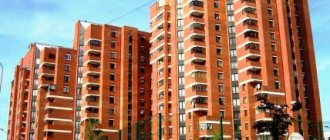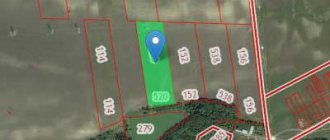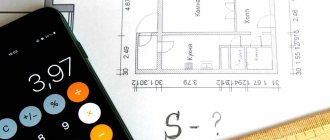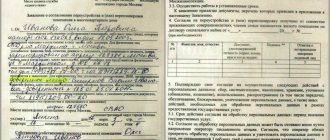The land plot on which an apartment building is built has a certain value. The question naturally arises: who owns it? First of all, this is important for residents, service companies and city authorities. Each of them pursues its own goal. Residents want to be sure that the owner will not appear and claim their rights to the site. Utilities seek to determine their area of responsibility and share it with the owner of the land. The local administration understands that it will not be possible to use the land for any other purpose and should facilitate its registration as private property. Let's consider this pressing issue from the point of view of the law and established rules.
Plot for apartment buildings and adjacent territory: definition and purpose.
Each building occupies a certain plot of land. Each multi-storey residential building has an adjacent area, without which the operation of the building is impossible. The land under the house and the surrounding area are an important component of comfortable and safe living. On the ground under the house and adjacent area the following will be organized:
- laying communications;
- pedestrian areas;
- emergency services entrance;
- temporary parking areas for personal vehicles;
- landscaping;
- specially equipped sanitary facilities;
- areas for recreation and walking, including for people with disabilities.
Without all this, the normal functioning of the territory and the house is impossible. Understanding the importance of adjacent land plots, Russian legislation has developed regulatory documents regulating these issues.
Legal regulation of land ownership issues in a residential building.
The Housing Code of the Russian Federation states that apartment owners have every right and can count on ownership and disposal of the land on which the apartment building stands.
The Land Code of the Russian Federation has established that the territory under a residential building can become the property of apartment owners if it is registered in the cadastral register in compliance with all procedures for the formation of a site plan.
The Town Planning Code of the Russian Federation regulates the process of forming and establishing the size of the territory and its boundaries. This is mandatory, since any site that does not have specific boundaries cannot be recognized as an object of civil rights and taxation.
The organization of work on the formation of a site for an apartment building and the adjacent territory necessary for comfortable living and maintenance is entrusted to local governments. Each municipality has developed relevant regulatory documents.
Who is the owner of the common property of the apartment building and on the basis of what document?
Who is the owner of the common property of an apartment building and on the basis of what document?
Dear Chairman MKD Council!
In accordance with Article 36 of the Housing Code of the Russian Federation, ownership of common property in an apartment building belongs to the owners of premises in the apartment building.
1. The owners of premises in an apartment building own, by right of common shared ownership, premises in this building that are not parts of apartments and are intended to serve more than one premises in this building, including inter-apartment landings, stairs, elevators, elevator and other shafts, corridors , technical floors, attics, basements in which there are utility lines, other equipment serving more than one room in a given house (technical basements), as well as roofs enclosing load-bearing and non-load-bearing structures of a given house, mechanical, electrical, sanitary and other equipment located in this house outside or inside the premises and serving more than one room, the land plot on which this house is located, with elements of landscaping and landscaping, and other objects intended for the maintenance, operation and improvement of this house, located on the specified land plot ( hereinafter referred to as common property in an apartment building). The boundaries and size of the land plot on which the apartment building is located are determined in accordance with the requirements of land legislation and legislation on urban planning.
2. The owners of premises in an apartment building own, use and, within the limits established by this Code and civil legislation, dispose of the common property in the apartment building.
3. Reducing the size of common property in an apartment building is possible only with the consent of all owners of premises in this building through its reconstruction.
4. By decision of the owners of premises in an apartment building, adopted at a general meeting of such owners, common property in an apartment building may be transferred for use to other persons if this does not violate the rights and legitimate interests of citizens and legal entities.
5. The land plot on which the apartment building is located may be encumbered with the right of limited use by other persons. It is not permitted to prohibit the establishment of encumbrances on a land plot if it is necessary to ensure access for other persons to objects that existed before the date of entry into force of this Code. A new encumbrance of a land plot with a right of limited use is established by agreement between the person requiring such an encumbrance of the land plot and the owners of premises in an apartment building. Disputes regarding the establishment of encumbrance of a land plot with the right of limited use or the conditions of such encumbrance are resolved in court.
On the issue concerning the ownership, use, and disposal of property provided for in Part 6 of this article, see Articles 246, 247, 260 of the Civil Code of the Russian Federation.
6. In the event of destruction, including accidental death, demolition of an apartment building, the owners of the premises in the apartment building retain a share in the right of common shared ownership of the land plot on which the house was located, with elements of landscaping and landscaping and other intended for maintenance and operation and improvement of this house, objects located on the specified land plot, in accordance with the share in the right of common shared ownership of common property in an apartment building at the time of destruction, including accidental death, demolition of such a house. These owners own, use and dispose of the property provided for in this part in accordance with civil legislation.
(Part six introduced by Federal Law of December 18, 2006 N 232-FZ)
On the issue concerning the formation of a land plot on which an apartment building is located and its transfer into the ownership of the owners of the premises of such a house, see Article 16 of Federal Law No. 189-FZ of December 29, 2004.
1. In the existing development of settlements, the land plot on which the apartment building and other real estate objects included in such a building are located is the common shared property of the owners of the premises in the apartment building.
2. The land plot on which the apartment building and other real estate objects included in such a building are located, which was formed before the entry into force of the Housing Code of the Russian Federation and in respect of which state cadastral registration was carried out, passes free of charge into the common shared ownership of the owners of the premises in the apartment building home.
3. If the land plot on which the apartment building and other real estate objects included in such a building are located was not formed before the entry into force of the Housing Code of the Russian Federation, on the basis of a decision of the general meeting of owners of premises in the apartment building, anyone authorized by the said meeting a person has the right to apply to state authorities or local authorities with an application for the formation of a land plot on which an apartment building is located.
NOTE: Part 3 art. 16 was recognized as inconsistent with the Constitution of the Russian Federation, its articles 19 (part 1), 35 (parts 1 and 2) and 36, to the extent that it interferes with the owner of premises in an apartment building who is not authorized to do so by the general meeting of owners of premises in this building , contact state authorities or local authorities with an application for the formation of a land plot on which an apartment building is located (Resolution of the Constitutional Court of the Russian Federation of May 28, 2010 N 12-P).
4. The formation of the land plot on which the apartment building is located is carried out by state authorities or local governments.
5. From the moment the land plot is formed and its state cadastral registration is carried out, the land plot on which the apartment building and other real estate objects included in such a building are located passes free of charge into the common shared ownership of the owners of the premises in the apartment building.
6. Apartment buildings and other real estate objects included in such buildings, built or reconstructed after the entry into force of the Housing Code of the Russian Federation, are accepted by the acceptance committee only when the size and boundaries of the land plots on which such apartment buildings are located are established.
This is important to know: The act of determining the boundary of the division of property
7. A ban on encumbering the land plot on which an apartment building is located is prohibited if it is necessary to ensure free access of persons to real estate objects that are part of the apartment building and existed before the entry into force of the Housing Code of the Russian Federation.
How to find out who owns the land under an apartment building.
Practice shows that most apartment owners do not know who owns the land under their property. It is advisable to find out information when purchasing an apartment, preparing it for sale or donation, at the time of entering into inheritance rights. You can get an answer to this question:
- On the board of a homeowners association (HOA) or housing construction cooperative. In houses with an organized form of management, in most cases the area under the building is properly decorated
- Contact your local administration. It is the local government that is obliged to comply with the norms of the Land and Town Planning Codes of the Russian Federation, which means having a service within its structure that is responsible for accounting for all lands of the municipality.
- Go to the Rosreestr website in the “Public Cadastral Map” section, which contains information about all registered territories.
Taxpayers can obtain information about how real estate tax is calculated in MKD. If the land plot is registered as shared ownership, the cadastral value of the residential premises increases.
How to find out who owns an apartment building?
“Housing Code of the Russian Federation” dated December 29, 2004 N 188-FZ (as amended on July 29, 2017) (as amended and supplemented, entered into force on August 10, 2017)
Housing Code of the Russian Federation Article 169. Contributions for major repairs of common property in an apartment building1. Owners of premises in an apartment building are required to pay monthly contributions for major repairs of common property in an apartment building, with the exception of cases provided for in part 2 of this article, part 8 of article 170 and part 5 of article 181 of this Code, in the amount established in accordance with part 8.1 of Article 156 of this Code, or, if the corresponding decision is made by the general meeting of owners of premises in an apartment building, in a larger amount.
(as amended by Federal Law dated July 29, 2017 N 257-FZ)
(see text in the previous edition)
2. Contributions for major repairs are not paid by the owners of premises in an apartment building that is recognized in accordance with the procedure established by the Government of the Russian Federation as being in disrepair and subject to demolition, as well as in the event that an executive body of state power or a local government body makes decisions on the seizure of a land plot for state or municipal needs, on which this apartment building is located, and on the seizure of each residential premises in this apartment building, with the exception of residential premises owned by the Russian Federation, a constituent entity of the Russian Federation or a municipal entity. Owners of premises in an apartment building are exempt from the obligation to pay contributions for major repairs starting from the month following the month in which the decision to withdraw such a land plot was made.
2.1. The law of a constituent entity of the Russian Federation may provide for the provision of compensation for the costs of paying a contribution for major repairs, calculated based on the minimum amount of the contribution for major repairs per one square meter of total living space per month, established by a regulatory legal act of a constituent entity of the Russian Federation, and the size of the regional standard of regulatory area of residential premises used to calculate subsidies, single non-working owners of residential premises living alone who have reached the age of seventy years - in the amount of fifty percent, eighty years - in the amount of one hundred percent, as well as living as part of a family consisting only of non-working citizens living together pension age, owners of residential premises who have reached the age of seventy years - in the amount of fifty percent, eighty years - in the amount of one hundred percent.
(Part 2.1 introduced by Federal Law dated December 29, 2015 N 399-FZ)
3. The obligation to pay contributions for capital repairs arises for the owners of premises in an apartment building after eight calendar months, unless an earlier period is established by law of the constituent entity of the Russian Federation, starting from the month following the month in which the approved regional capital program was officially published renovation, which includes this apartment building, except for the case established by part 5.1 of Article 170 of this Code.
(as amended by Federal Laws dated December 28, 2013 N 417-FZ, dated June 29, 2015 N 176-FZ)
(see text in the previous edition)
4. Income from the transfer for use of common property in an apartment building, funds from a homeowners’ association, housing cooperative, including income from the economic activities of a homeowners’ association, housing cooperative, may be allocated by decision of the owners of premises in an apartment building, or by the decision of members of the owners’ association housing, a decision of members of a housing cooperative, adopted in accordance with this Code, the charter of a homeowners’ association, the charter of a housing cooperative, to form a capital repair fund to fulfill the obligation of the owners of premises in an apartment building to pay contributions for major repairs and (or) to form part of capital repair fund in excess of that formed on the basis of the established minimum contribution for capital repairs, which can be used to finance any services and (or) work on major repairs of common property in an apartment building.
(Part 4 as amended by Federal Law dated June 29, 2015 N 176-FZ)
(see text in the previous edition)
The basis for the transfer of land under the apartment building into the ownership of the owners of the premises.
The legislation of the Russian Federation proposes to voluntarily register ownership of the land under residential buildings. Often, an unregistered territory is convenient for municipal authorities. The authorities are given the opportunity to dispose of the land at their own discretion, regardless of the interests of the residents.
But it is also beneficial for apartment owners to privatize land and dispose of it at their own discretion. This will make it possible to build a parking lot and playground on your territory, and demolish old and unsuitable structures. In addition, they will be protected from unauthorized occupation and unapproved spot development.
It is necessary to understand that if a person is the owner of a premises in an apartment building, this is already a good reason to become the legal owner of the land under the house. At the same time, you need to know that any real estate requires registration and must be taken into account in the cadastral register. Each apartment owner can apply for the formation of a plot.
In what cases is the municipality the owner of the land under a residential building?
Local authorities may be the owner of land plots under residential buildings, in which all apartments belong to the municipal housing stock. It can be:
- houses built according to special programs, with the distribution of apartments under a social rental agreement;
- new buildings for the resettlement of dilapidated and emergency housing;
- old residential buildings whose residents did not privatize their square meters.
In all other cases, land without a cadastral number and designated boundaries formally belongs to local governments.
If the land plot is not formed, the city administration can sell or lease it.
EXAMPLE: Construction is planned on the territory. The construction site is too small, and construction may affect the adjacent area of the neighboring apartment building. How does the developer solve the problem? He comes to the municipality, explains his situation and learns that, fortunately for him, the neighboring plot is not formed and does not have clear boundaries. The municipality, which has the right to establish the boundaries of land plots, organizes land surveying taking into account the wishes of the developer.
The administration motivates its actions by replenishing the budget through rent from the developer. And residents of the apartment complex will end up with a reduced area that has no parking, no playground, or even a clothes dryer. This would have been impossible if the owners of the apartment buildings had taken the initiative earlier.
Not long ago, the State Duma adopted a law to simplify the procedure for land acquisition. This is explained by the desire to develop an untapped and unregistered territory. In fact, any plot that a potential investor likes may end up being sold in agreement with an unscrupulous official.
Briefly about the main thing: land plot for an apartment building
Questions from subscribers regarding rights to a land plot under an apartment building.
Whose land is under our apartment building and can officials sell it?
If the land plot has not been formed and state cadastral registration has not been carried out in relation to it, the land under the apartment building is the property of the corresponding public legal entity.
In Moscow, it is the city, as a subject, that owns the majority of land plots under houses, and very often there are cases when cadastral boundaries cross neighboring houses and plots.
At the same time, within the meaning of parts 3 and 4 of Article 16 of the Introductory Law, the owner (Moscow) does not have the right to dispose of this land in the part in which a land plot for an apartment building should be formed. In turn, the owners of premises in an apartment building have the right to own and use this land plot to the extent necessary for their operation of the apartment building, as well as the objects that are part of the common property in such a building.
clause 67 of the Resolution of the Plenum of the Supreme Court of the Russian Federation and the Plenum of the Supreme Arbitration Court of the Russian Federation dated April 29, 2011 N 10/22 “On some issues arising in judicial practice when resolving disputes related to the protection of property rights and other property rights.”
How and where to find out the boundaries of the land plot under an apartment building?
Using the example of the city of Moscow, this information may contain:
1. Electronic atlas of Moscow. https://atlas.mos.ru/ Sampling from the map - Land surveying areas of residential areas After reading, you can understand the answer to the main question: Whether or not the procedure for approving the block surveying project has been carried out. You can also find out the preliminary data of the administrative document. The approval of the project is carried out by the Moscow City Property Department. Its configuration can be compared on the public cadastral map
2. Also on the public cadastral map: https://pkk5.rosreestr.ru/
A land plot with boundaries is highlighted in red and almost always corresponds completely to the land plot set up during construction and has a cadastral number: 77: xx: yyyy: zzz I’m not ready to say how much it corresponds to the real boundaries and, for example, the existing fence, but if the plot is large enough, you should not miss the opportunity arrange it exactly in this form. Few people in Moscow can boast of a local area. And if it is not formalized within these boundaries, then who knows what thoughts the DGI and other officials will have regarding the vacant land near the house.
If the land surveying project is not ready, then a reasonable question is: Where to start?
You need to contact:
- District Administration;
— GlavAPU;
-Department of City Property.
I have a question: when will they prepare a land surveying project for the area where the apartment building is located? Get an answer from them and, based on the answer, draw conclusions about further steps.
Is a decision of the general meeting of owners necessary to register ownership of a land plot?
Currently, few people have such a decision of the general meeting on the person authorized to submit an application for the formation of boundaries, and even more so a decision on the acquisition of ownership of a land plot.
If the land plot on which an apartment building and other real estate objects included in such a building are located was not formed before the entry into force of the Housing Code of the Russian Federation, on the basis of a decision of the general meeting of owners of premises in the apartment building, any person authorized by the said meeting has the right contact state authorities or local authorities with an application for the formation of a land plot on which an apartment building is located.
On the one hand, this does not prevent any person from asking about the formation of a land plot, since the Constitutional Court (Resolution No. 12-P dated May 28, 2010) explained that owners of premises in apartment buildings, land plots under which have not been formed, have the right to individually contact authorized state authorities or local governments with applications for the formation of these land plots. Such statements are the basis for the relevant public authority to form a land plot and carry out its state cadastral registration.
But on the other hand, in any case, at the meeting all this must be conveyed to the owners. And if there is a decision of the meeting, then the person who turns to the Department with the question of forming a land plot will not then be the main one to blame for all the troubles.
Moreover, no changes were made to the law...
A person authorized to do so by a decision of the general meeting of owners of premises in an apartment building (Part 1, Article 20 of Law No. 221-FZ of July 24, 2007) has the right to apply for cadastral registration.
What is the price of the issue when registering ownership of a land plot?
From the moment the land plot is formed and its state cadastral registration is carried out, the land plot passes free of charge into the common shared ownership of the owners of premises in an apartment building (Part 5 of Article 16 of the Law of December 29, 2004 N 189-FZ).
Cadastral work is carried out on the basis of an order from a state authority or local government, in Moscow - the Department of City Property.
That is, in fact, everything should be handled by the Department, but in a telephone conversation, as well as on their website, it was explained that, according to paragraph 1 of Art. 22 of the Federal Law of July 24, 2007 No. 221-FZ “On the State Real Estate Cadastre”, registration of a land plot with the state cadastral register is carried out on the basis of a boundary plan. In connection with the release of amendments, we ask you to contact a qualified cadastral engineer regarding the preparation of a boundary plan for registering a land plot with state cadastral registration.
That is, only an order will be prepared from Moscow, and all issues related to the preparation of the boundary plan will be at the expense of the residents (owners). The cost of preparing documentation is ~ 100-150 tr. The cadastral engineer will give you the exact price and procedure for dealing with the boundary plan.
The register of cadastral engineers is posted on the official website of Rosreestr:
Kuzmin D.N. (lawyer for housing and communal services) Especially for the telegram channel ZHKH-24 and Yandex.ZEN
The right of owners of apartment building premises to use municipal land near the house.
Owners of apartments in a building on an undeveloped plot actually own and use the area on an equal basis with the owners of registered plots. The lack of legal documents does not prohibit its operation to the extent necessary for effective service and comfort of residents.
The territory owned by the city also needs to be cleaned and the services of a management company must be paid for.
Features of the emergence of land ownership in new buildings and old buildings.
Land legislation prohibits the sale of land for the construction of facilities. Now the land belongs to the developer only on a lease basis, which is allocated on a competitive basis.
The responsibilities of the developer's tenant include organizing land surveying of the site under the new building and registering it with the cadastral register. Thus, the happy owners of new apartments automatically become owners of the land under the house, in a share proportional to the area of the purchased premises.
In older houses, things are different. Not all post-Soviet buildings are registered in the Unified State Register of Real Estate Rights (USRE) and in the cadastre. Before privatization, the old house and the land under it must be registered.
Rationale
Let us assume that the property rights of apartment owners are limited only to their premises and do not actually extend to common property. In this case, a person leaving his apartment on the landing enters the territory of someone else’s property. It should be noted that the owner of this very common property cannot create any obstacles to the use of his property and its protection from encroachment by outsiders.
That is, there is absolutely no obstacle for the owner of common property to make, for example, passage through his territory a toll, set a tariff (for example, 10 rubles for each step) and charge a fee from everyone who passes through his property . And if the owner of the apartment wants to get into his premises through common property (for example, along the same stairs that belongs to some other owner), he would be obliged to pay the established tariff to the owner of this common property.
Why shouldn’t the owner of common property open, for example, a warehouse in the premises he owns? Store, for example, boards or bricks on stairs, landings, basements and attics. After all, this is his property - he has the right to use it at his own discretion. And the fact that apartment residents cannot get into their apartments is their problem - let into their premises through a window or in any other way that does not involve moving around someone else’s property .
You can, of course, invent that common property supposedly belongs to the state or municipality, which, again, according to some fictitious norms, “cannot do this to people.”
But it is well known that both the municipality and the state have the right to sell, lease, etc. their property. Let’s say that the common property will be sold or leased to a certain person who will set the tariff for a paid passage or equip a warehouse in the entrance - and this person absolutely certainly cannot be prohibited from such actions! It is difficult to imagine that any citizen renting municipal premises does not have the right to prohibit passage through this premises for an indefinite number of persons. But such a room could be an apartment! Are tenants of social or commercial rental apartments required to let anyone into their apartments who wants to enter? And if you believe the supporters of the false theory in question, stairs, attics, and basements are the same municipal property as apartments occupied by tenants.
But in addition to premises, common property includes, for example, common house heating, electrical, water supply, and sanitation systems. Is this also someone’s property that has nothing to do with the owners of the premises? But then why does the owner of this property need any pipes through which water is supplied to consumers who are not related to the owner of the pipes? After all, nothing prohibits this owner from selling, for example, these pipes for scrap metal - after all, this is his property! So what if after dismantling and selling the pipes, someone’s house will lose water? Let them build their own water supply systems, run their own personal pipes from wherever they please, or live without water, without electricity, without sewerage. Why should the owner of communal pipes, wires, and other equipment care about the problems of these residents?
As can be seen from the above reasoning, the assumption that the common property of the MKD has a certain individual owner leads to the justification of a certain absurd situation.
This is important to know: Whose property is the heating risers in an apartment building?
It is to prevent such absurdity that housing legislation establishes that common property in an apartment building belongs to the owners of the premises in such a building on the right of common shared ownership (Article 36 of the Housing Code of the Russian Federation), while the share in the right of common ownership of the property in the apartment building of the owner of the premises in this house should be the fate of the ownership of the specified premises, and the allocation in kind of one’s share in the right of common ownership of the property in the apartment building is prohibited (Article 37 of the Housing Code of the Russian Federation).
Thus, the owners of the premises jointly own common property and do not have the right to divide it among themselves (for example, it is unacceptable to establish that one neighbor owns the even steps of the stairs, another – the odd ones, a third – the basement, a fourth – the attic, etc.). The common property is intended for use by all owners of apartment building premises, belongs to these owners of premises and is maintained at their expense.
When the territory under an apartment building is transferred to residents free of charge
According to the Housing Code of the Russian Federation, the land under an apartment building built and put into operation before 2005 is transferred to home owners free of charge. But the transfer occurs only if the following conditions are met:
- the land under the house does not contradict the plan and is demarcated by the municipality;
- construction work ended before January 2005;
- the local area is registered and has an official cadastral number.
If these conditions are not met, then the nominal owner of the land is the municipality. This is not a reason to worry, because only residents of the house will be able to privatize the plot.
From the moment the plot is registered and a cadastral number is assigned, it becomes the property of the residents of the house free of charge.
General information
Dear readers! The article talks about typical ways to resolve legal issues, but each case is individual. If you want to find out how to solve your particular problem , contact a consultant:
8 (800) 700 95 53
APPLICATIONS AND CALLS ARE ACCEPTED 24/7 and 7 days a week.
It's fast and FREE !
Housing legislation indicates that a common plot of land, the commissioning of which was completed before 2005, becomes the common ownership of the residents of the house free of charge.
This type of transfer of land for common use occurs subject to a certain number of conditions:
- the site has a plan with boundaries set by the local authority;
- land development work was completed before 2005, when the Housing Code of the Russian Federation came into force;
- the plot on which the apartment building is located is included in Rosreestr and a cadastral plan has been developed.
If the above conditions are not met, then the land plot will be considered not transferred to the ownership of the residents of the apartment building. As for housing in new houses built after this goal, the owners of the apartments will be the owners on an automatic basis.
Conditions for recognizing the local area and land under the apartment building as common property.
The plot under the house and the adjacent territory, on which important infrastructure facilities and landscaping elements are located, become common property.
Only the Unified State Register and the cadastral registration authority can provide accurate information about what is included in the common property of a multi-storey building, after surveying and establishing boundaries.
Only a legally registered plot becomes the shared property of the residents.
Responsibilities of the owner of a land plot for its maintenance.
Regardless of whether the owner himself uses the land of the apartment building or rents it out together with the apartment for temporary use, he is obliged to:
- use the land only for its intended purpose;
- do not harm the environment;
- do not violate established boundaries;
- remember that the property is shared and respect other shareholders;
- do not interfere with management companies and homeowners associations to carry out repair and maintenance work.
So at what point does ownership of land under an apartment building arise? When a person buys an apartment in a multi-storey building, he automatically receives the right to use the land, but this does not mean that the procedure for privatizing land under an apartment building is completed.
The owner of the apartment becomes the full owner of the plot, provided that it is formed and registered with cadastral and tax authorities. In this case, the owner can dispose of his property in the manner prescribed by law in relation to shared ownership.
conclusions
As consequences of the introduction of the theory of non-involvement of the owners of apartment building premises in the ownership of the common property of the house, one can highlight both the reluctance to pay for the maintenance and servicing of this property that belongs to someone unknown, and an exclusively consumer negligent attitude towards this property. Very often, residents of houses, guided by the false theory in question, do not see anything wrong with damage, deterioration, destruction of “other people's property,” or its pollution. After all, it’s one thing to have your own apartment, where you don’t want to litter, you don’t want to break or spoil anything, and it’s quite another thing to have someone’s entrance where you can throw garbage, paint on the walls, and break glass. However, not all residents understand that replacing broken glass, cleaning entrances, routine repairs and maintenance of all structures and structures of the house are carried out at the expense of these residents themselves, from their funds paid for. And the more “barbaric” the attitude is demonstrated towards the common property of the house, the more this property is damaged and polluted, the more funds are required to maintain it in proper condition.
The considered false theory and others like it do not carry any constructive information, but are aimed only at inciting hostility , at introducing into the minds of consumers the idea that they are being deceived, that money is being unreasonably charged from them for the maintenance of property that does not belong to them. It is obvious that there can be misleading consumers of housing and utility services
In fact, the common property of the apartment building belongs exclusively to the owners of the premises in this house and to no one else. As another confirmation of this circumstance, one can cite, for example, the fact that there is no information in the Unified State Register about such objects as apartment buildings or the common property of apartment buildings - these objects do not have a sole owner, and ownership rights to such objects are not registered.
This is important to know: The limitation period for the assignment of claims
The false theory that the common property of apartment buildings does not belong to the owners of apartment buildings is completely refuted by the arguments presented in this article .
And finally, I would like to warn readers against a fairly common mistake when the concept of “apartment building” is confused with the concept of “residential building”. These are two different definitions. A residential building belongs to one owner, while an apartment building consists of a collection of apartments belonging to different owners.
Part 2 of Article 16 of the Housing Code of the Russian Federation: “ A residential building is an individually defined building, which consists of rooms, as well as premises for auxiliary use, intended to satisfy citizens’ household and other needs related to their residence in such a building.”
Clause 6 of the Russian Federation Regulations dated January 28, 2006 N47: “ An apartment building is a collection of two or more apartments that have independent access either to a land plot adjacent to a residential building or to common areas in such a building. An apartment building contains elements of the common property of the owners of premises in such a building in accordance with housing legislation.”











